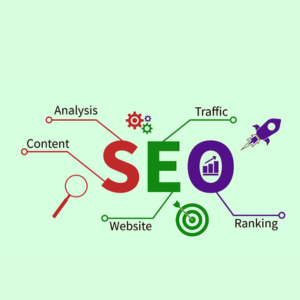Technical SEO refers to the process of optimizing a website’s technical aspects to improve its performance and search engine rankings. Unlike on-page SEO, which focuses on content and keyword optimization, or off-page SEO, which involves external factors like backlinks, technical SEO deals with the behind-the-scenes elements that impact a website’s ability to be crawled and indexed by search engines.
Optimization techniques include compressing images, leveraging browser caching, and minifying code. For the right technical strategy choose the best seo service provider in India.
Technical SEO elements
Site Speed: The Speed Factor
Site speed is a critical component of technical SEO and has a direct impact on user experience and search engine rankings. A slow-loading website can frustrate users, leading to higher bounce rates and lower engagement. Google considers site speed as a ranking factor, which means faster websites are likely to rank higher in search results.
How to Improve Site Speed
- Optimize Images: Compress images without sacrificing quality to reduce load times.
- Leverage Browser Caching: Store frequently accessed resources locally to speed up load times for repeat visitors.
- Minify CSS, JavaScript, and HTML: Remove unnecessary code and whitespace to enhance load times.
- Use a Content Delivery Network (CDN): Distribute your content across multiple servers to reduce latency and improve speed.
Read more: Google June 2024 Spam Algorithm Update
Indexing: Ensuring Your Content is Found
Indexing is the process by which search engines crawl and store your website’s pages in their databases. If your pages are not properly indexed, they won’t appear in search results, making them invisible to potential visitors.
Key Aspects of Indexing:
- Robots.txt: Ensure your robots.txt file is correctly configured to prevent search engines from crawling and indexing pages that shouldn’t be included, such as duplicate content or admin pages.
- XML Sitemap: Create and submit an XML sitemap to search engines to help them discover and index your website’s pages more efficiently.
- Canonical Tags: Use canonical tags to indicate the preferred version of a page, helping to prevent duplicate content issues and consolidate link equity.
Crawlability: Facilitating Search Engine Access
Crawlability refers to the ability of search engine bots to access and navigate your website. A site that is difficult for bots to crawl will struggle to achieve optimal indexing and ranking.
Tips for Improving Crawlability:
- Internal Linking: Implement a strong internal linking structure to guide crawlers through your site and ensure all important pages are accessible.
- Fix Broken Links: Regularly check for and repair broken links that can hinder crawlers from accessing your content.
- Optimize Site Structure: Organize your website into a clear and logical hierarchy, using breadcrumb navigation and a well-structured menu to improve crawl efficiency.
Importance of Technical SEO
Technical SEO is essential for ensuring that your website is accessible, usable, and understandable by search engines. It lays the groundwork for a strong SEO strategy by addressing issues that can impact your site’s visibility and user experience. Proper technical optimization helps in achieving better search rankings, increasing organic traffic, and ultimately, improving the overall effectiveness of your SEO efforts.
The Synergy of Technical SEO Components
When site speed, indexing, and crawlability are optimized, they work together to enhance your website’s performance and search engine visibility. A fast-loading, easily crawlable site with properly indexed pages provides a better user experience and is more likely to achieve higher rankings in search results.
SpaceEdge Technology: SEO service provider
SpaceEdge Technology is at the forefront of digital innovation, specializing in creating cutting-edge SEO strategies that propel your business to new heights. With a dynamic team of experts, we are dedicated to transforming your online presence and achieving measurable results.


